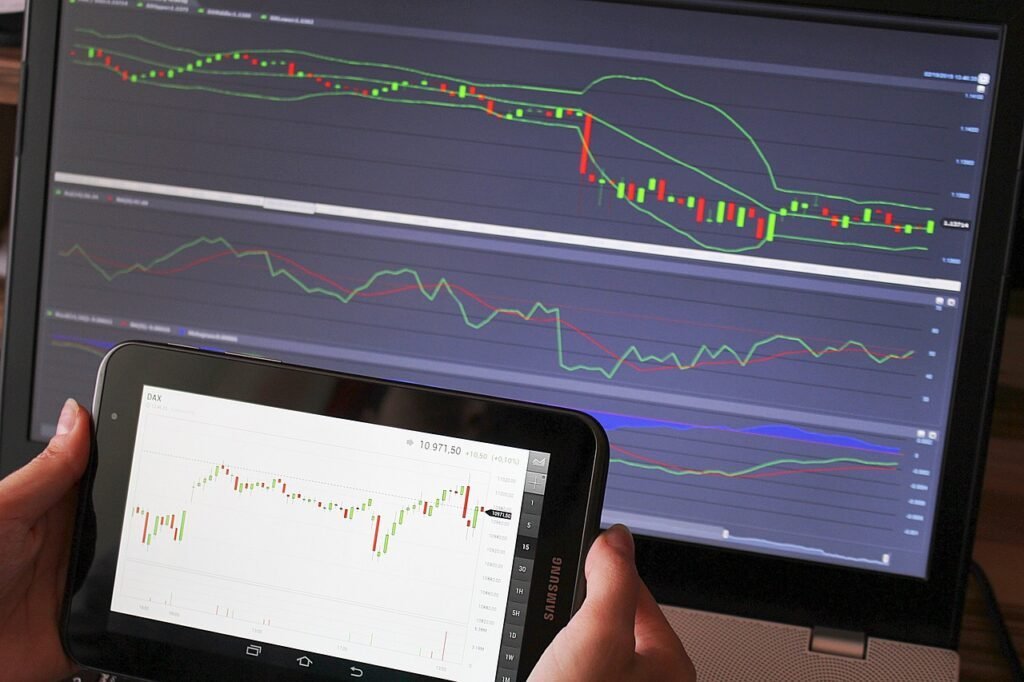Welcome to the captivating world of Forex trading, where fortunes are made and lost amidst the ever-fluctuating tides of global currencies.
For those seeking not just success but substantial gains in this dynamic market, the key lies not only in deciphering market trends but in mastering a strategic approach that maximizes profitability.
Table of Contents
- Understanding Risk Management
- Mastering Technical Analysis
- Implementing Effective Money Management
- Developing a Solid Trading Plan
- Leveraging Advanced Trading Tools
- Psychology and Discipline in Trading
- Learning from Successful Traders
In this guide, we’ll explore an arsenal of proven strategies and time-tested techniques aimed at elevating your trading prowess. Among these, we’ll dissect the intricacies of risk management, delve into the nuances of technical analysis, and uncover the psychological elements crucial for sustained success.
Prepare to embark on a journey where precision, strategy, and disciplined execution converge to unlock the potential for a tenfold increase in your average profit per trade. So, fasten your seat belt, sharpen your analysis, and let’s navigate the realms of Forex trading for an exponential leap in your trading game.
Understanding Risk Management

This section delves into the significance of risk management, touching upon the pivotal role of stop losses, take profits, and position sizing in minimizing losses and maximizing profitability in Forex trading.
In the volatile world of Forex trading, risk management is the bedrock upon which successful strategies are built. One of the fundamental aspects of risk management is the strategic use of stop losses and take profits. These mechanisms act as a safety net, allowing traders to limit potential losses and secure profits at predetermined levels.
Setting stop losses is akin to placing a safety barrier, defining the maximum loss one is willing to bear on a trade. This crucial tool prevents emotional decision-making during market fluctuations, ensuring a disciplined approach to trading. Take profits, on the other hand, allow traders to lock in gains by automatically closing a position when a specified profit level is reached. This technique not only safeguards profits but also prevents the temptation to hold onto a position for too long, risking a potential reversal.
Another vital aspect of risk management is position sizing. Determining the appropriate position size based on the level of risk tolerance is paramount. By allocating a percentage of the trading capital to each trade in proportion to the perceived risk, traders can mitigate the impact of potential losses while allowing room for profitable trades to flourish.
Successful traders often adhere to the principle of not risking more than a certain percentage of their trading capital on any single trade. For instance, limiting exposure to 1-2% of the total capital per trade helps maintain a buffer against consecutive losses and sustains longevity in the trading game.
Implementing these risk management strategies not only protects traders from significant losses but also fosters a disciplined and methodical approach to trading, ultimately contributing to an increased average profit per trade.
Mastering Technical Analysis

In the realm of Forex trading, technical analysis stands as a beacon guiding traders through the labyrinth of market fluctuations. It’s the art of interpreting charts, patterns, and indicators to forecast potential price movements. Embracing technical analysis empowers traders to decipher market trends, identify crucial support and resistance levels, and gauge the momentum of currency pairs.
Charts become more than just visual representations; they morph into treasure troves of information, offering insights into the behavior of market participants. Whether it’s recognizing classic patterns like double tops or bottoms, comprehending the significance of moving averages, or employing oscillators to measure the strength of trends, technical analysis equips traders with a robust toolkit.
Understanding these tools enables traders to make informed decisions, spotting potential entry and exit points with heightened precision. By amalgamating historical price data, volume metrics, and various indicators, traders gain a holistic view of market movements, enhancing their ability to forecast price action.
Moreover, technical analysis isn’t merely about predicting price movements; it’s about comprehending market sentiment. The patterns and trends on a chart often reflect the collective psychology of traders, unveiling the underlying dynamics shaping market movements.
In our exploration of mastering technical analysis, we’ll dive deep into chart analysis, explore the significance of key indicators, and uncover strategies to effectively integrate technical analysis into your trading arsenal. Join us on this journey to harness the power of technical analysis and unlock the potential for astute decision-making in the Forex markets.
Implementing Effective Money Management

In the fast-paced and often unpredictable world of Forex trading, effective money management isn’t just a strategy – it’s the cornerstone of sustainable success. At its core, money management revolves around optimizing risk while maximizing returns, a delicate balancing act that separates successful traders from those who struggle to navigate the turbulent waters of the market.
One of the fundamental principles of effective money management is the concept of risk-reward ratio. This principle guides traders to assess the potential gain against the risk of each trade. By aiming for trades where the potential reward outweighs the risk incurred, traders align themselves with a strategy that, even with a moderate success rate, can lead to profitable outcomes.
Position sizing, another crucial aspect of money management, involves determining the appropriate amount of capital to allocate to each trade. Calculating position sizes based on the level of risk tolerance and the specific trade setup helps manage exposure. By limiting the amount of capital at risk in any single trade, traders safeguard their accounts against significant losses and ensure longevity in the market.
Diversification across different currency pairs is also a key tenet of effective money management. While focusing on a particular currency pair may seem enticing, diversifying one’s portfolio reduces the risk associated with being overly exposed to a single market. It spreads risk across various pairs and can potentially cushion the impact of adverse movements in any one currency.
Join us as we delve deeper into the intricacies of effective money management. We’ll explore risk management techniques, delve into the nuances of position sizing strategies, and examine the significance of diversification in constructing a robust trading portfolio. Together, we’ll unravel the secrets that fortify traders against market volatility and pave the way for consistent profitability.
Developing a Solid Trading Plan

Success in Forex trading isn’t merely a result of market analysis or swift decision-making; it’s rooted in meticulous planning. A trading plan serves as the North Star, guiding traders through the ebbs and flows of the ever-changing currency markets. It’s a blueprint that encapsulates a trader’s goals, strategies, risk tolerance, and market approach.
Crafting a solid trading plan involves a comprehensive evaluation of personal objectives. Are you aiming for short-term gains or long-term growth? What’s your risk appetite? Answering these questions forms the foundation upon which the trading plan is built.
Moreover, a trading plan encapsulates the trading strategy. This includes the methodology for market analysis, whether it’s technical, fundamental, or a hybrid approach. It outlines the criteria for entering and exiting trades, setting clear rules and parameters to guide decision-making.
Adaptability is another key attribute of a robust trading plan. Markets are dynamic, and what works today may not yield the same results tomorrow. A well-designed plan incorporates flexibility, allowing traders to adjust strategies in response to changing market conditions while staying aligned with overarching goals.
Join us as we embark on a journey to demystify the art of developing a solid trading plan. We’ll delve into the components that constitute a well-structured plan, explore the significance of goal-setting and adaptability, and outline the steps to create a comprehensive roadmap that aligns with your aspirations and market realities.
Leveraging Advanced Trading Tools

In the ever-evolving landscape of Forex trading, technology has emerged as a formidable ally, offering a plethora of sophisticated tools and innovations that augment traders’ decision-making capabilities. From algorithmic trading systems to advanced analytics and trading signals, these tools empower traders to make data-driven decisions with precision and agility.
Algorithmic trading systems, powered by complex algorithms, execute trades based on predefined criteria, removing human emotions from the equation. These systems analyze vast amounts of data at lightning speed, identifying opportunities and executing trades at optimal moments.
Furthermore, advanced analytics provide traders with in-depth insights into market trends, sentiment analysis, and predictive modeling. These tools equip traders with a deeper understanding of market dynamics, enabling them to anticipate potential price movememanagementnts more accurately.
Trading signals, often derived from technical indicators or market analysis, serve as cues for potential trading opportunities. These signals, when used judiciously, aid traders in validating their own analyses or identifying new trade setups.
Join us as we delve into the realm of advanced trading tools. We’ll explore the functionalities and benefits of algorithmic trading systems, unravel the power of advanced analytics in deciphering market behavior, and dissect the significance of trading signals as indispensable tools for enhancing decision-making in the dynamic world of Forex trading.
Psychology and Discipline in Trading

Beyond charts and numbers, the psychology of trading plays a pivotal role in a trader’s success. The ability to manage emotions, exercise discipline, and maintain a rational mindset amidst market volatility is as crucial as technical analysis. Understanding and controlling these psychological aspects are often the differentiating factors between successful and struggling traders.
Patience is the cornerstone of successful trading. The market doesn’t always conform to expectations instantly; it requires waiting for the right setups and opportunities. Impulsive decisions driven by emotions like fear or greed often lead to detrimental outcomes. Hence, cultivating patience becomes paramount.
Discipline acts as a guiding principle in adhering to a trading plan. It involves following predefined rules, executing trades based on strategy rather than emotions, and avoiding deviating from the plan. This consistency ensures that trades are made with a clear rationale, minimizing the impact of impulsive and emotionally-driven decisions.
Furthermore, managing emotions is essential. Fear of missing out (FOMO) or the fear of losing can prompt traders to act irrationally, leading to poor decision-making. Conversely, overconfidence stemming from a series of successful trades can also cloud judgment. Acknowledging and controlling these emotions are pivotal in maintaining a balanced and rational approach to trading.
Join us as we delve into the psychology behind trading. We’ll explore strategies to cultivate patience, maintain discipline, manage emotions, and build a mindset conducive to making rational decisions in the face of market fluctuations.
Learning from Successful Traders

The wisdom and experiences of successful Forex traders offer invaluable insights into navigating the complexities of the market. Learning from their journeys, understanding their strategies, and dissecting their approaches can significantly influence one’s own trading style and outcomes.
Studying the successes and failures of trading legends unveils a treasure trove of lessons. These individuals have weathered market storms, honed their strategies, and triumphed in the face of adversity. Through case studies, one can glean practical insights, learning not just from their victories but also from the mistakes they’ve made along the way.
Moreover, successful traders often embody certain principles that transcend market conditions. These principles might include aspects like risk management, patience, adaptability, or a disciplined approach to trading. Understanding how these principles shaped their success can guide aspiring traders in crafting their own path to success.
By analyzing the strategies, techniques, and mindsets of successful traders, traders can assimilate these learnings into their own trading methodologies. This assimilation of wisdom from seasoned professionals can serve as a compass, guiding traders towards making informed decisions and navigating the challenging terrain of the Forex markets.
Join us as we delve into the stories and strategies of successful traders. Through their experiences, we’ll extract valuable lessons and principles that have stood the test of time, offering inspiration and guidance to traders aiming to carve their path to success in the dynamic world of Forex trading.





